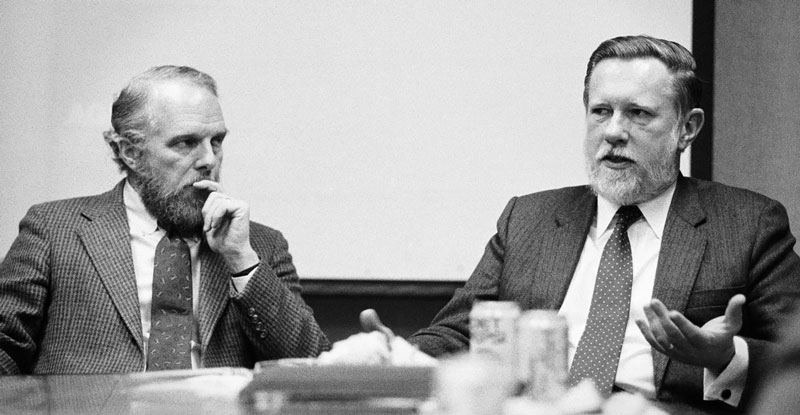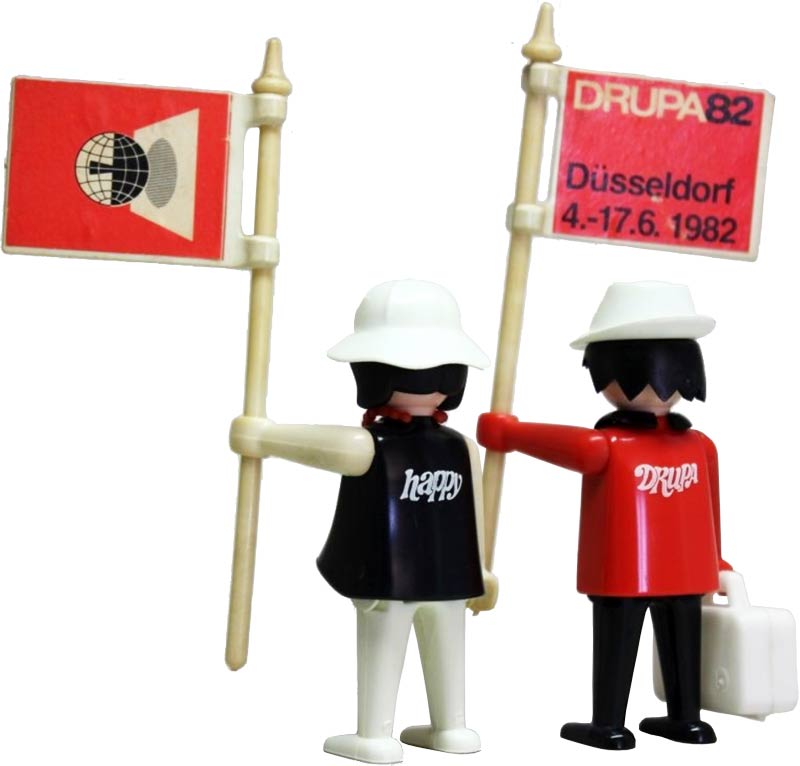For the first time, vendors use generic personal computers for their photocomposition systems. Typecraft Systems Ltd. markets inexpensive terminals based on the Commodore Pet personal computer. Linotype-Paul Ltd. introduces the APL-100 and APL-200 video input keyboards which use Apple II hardware.
Sony releases its first Trinitron monitor. These monitors will be the reference in the graphic arts market for many years.
Sun is incorporated in February 1982, with four employees.
Another newcomer is Adobe Systems Inc, cofounded by Charles Geschke and John Warnock. Both had previously worked for Xerox on a page description language called Interpress. For their new company they create a new page description language, called PostScript. It is supposed to be the heart of the printer controllers that Adobe will sell. Pretty soon both founders figure out that it is more lucrative to market PostScript itself than it is to manufacture and sell controllers that make use of it.
Agfa becomes a major shareholder in Compugraphic. It acquires the company 6 years later. At Cebit the company launches the P400, the world’s first 400 ppi LED printer. It is developed by Lucien De Schamphelaere who will later found Xeikon.
At the same show Scangraphic launches the Scantext 1000 phototypesetting system. It consists of a central console running the typesetting software on top of the CP/M operating system, as well as a filmsetter unit that moves film or photosensitive paper across a CRT tube to output text. Eight inch disk drives are used to store the software and all data.
To compete with Compugraphic and other vendors offering ‘affordable’ typesetting systems, Linotype introduces the CRTronic range of machines. The system shown below is the CRTronic 360, mainly targetted at small and mid-size companies.
This is what the editing screen looks like.

The Aesthedes workstation and its successor, the Aesthedes II shown below, are unique systems that make use of vector based b-spline curves to create camera-ready artwork. The system is marketed commercially from 1985 onwards but it never becomes a big success. It is a daunting workstation with a big graphic tablet surrounded by hundreds of membrane function keys. Its ten microprocessors feed three 20” full color high-res screens and three small data display screens.
Web offset presses are the hot topic at drupa, the world’s largest trade show for print and media.
Robin Nicholas and Patricia Saunders lead a team that creates Arial for use in IBM laser printers. The typeface is metrically identical to Helvetica, which means you can print a document set in Helvetica without any risk of text reflow but also without the need to pay a license fee for Helvetica. Stylewise Arial is inspired by Monotype Grotesque. It gains enormous popularity when Microsoft starts bundling it with all Windows releases from version 3.1 onward.
These are some important or remarkable events from 1982:
- Great-Britain and Argentina fight over the Falkland islands.
- Soviet leader Leonid Brezhnev dies.
- The album ‘Thriller’ from Michael Jackson is released and quickly becomes a million seller.
- The space shuttle Columbia makes its first mission.
- E.T. phones home.







Some fantastic info on this blog, well done. My father used to be a demonstrator and then sales rep for Compugraphic in the UK in the 1980s, and we often had machines in the house that I would get to play around with. Remember being blown away with the Powerview 10 when it came out 🙂